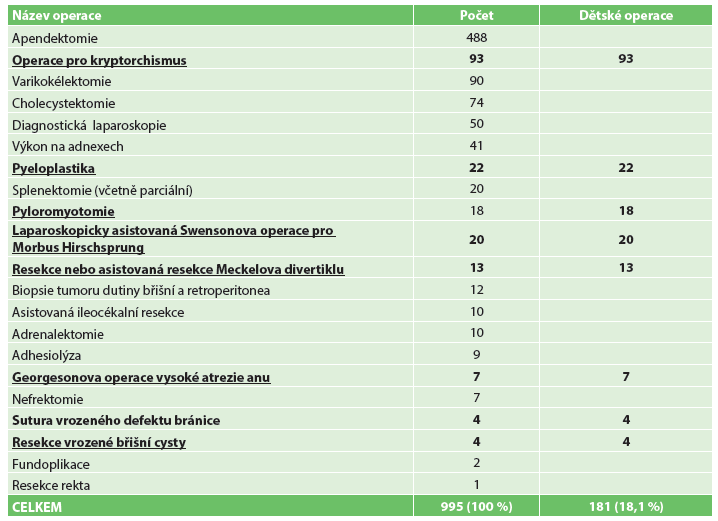Abstract
Introduction: Laparoscopy in small children was developed only after the adoption and verification of basic principles in adult patients and is mostly concentrated in specialized facilities due to the possible complications and necessity of follow-up specialized anesthesiological and post- -operative care. In the 1990s, the Clinic of Paediatric Surgery, Orthopaedics and Traumatology at University Hospital Brno was one of the first in the Czech Republic to begin operating on children laparoscopically. The presented study informs about the development of these minimally invasive methods, the frequency of their use, and the spectrum of patients at the pediatric surgery facility where laparoscopy in children has been systematically developed over many years.
Methods: Retrospective analysis of children operated upon laparoscopically at the clinic of Paediatric surgery, Orthopaedics and Traumatology of University Hospital Brno over the five-year period from 1 January 2012 to 31 December 2016. A list of surgical procedures was prepared which was then first divided into procedures specific exclusively for children and those common to adult patients’ surgery. Separately, an overview was prepared of operated patients under 50 kg, which was the boundary criterion defined by the authors for laparoscopy in children as opposed to adults. For all procedures, the frequency of the completed cases performed laparoscopically was precisely ascertained. The source for this data was the hospital system and surgical documentation.
Results: In the evaluated period, a total of 995 laparoscopic procedures were performed, more than half of which (56.8%) were in patients under 50 kg. The majority of those were procedures performed also in adults. The group of surgical operations exclusively specific to children was characterized by low frequencies of the individual procedures.
Conclusion: The presented analysis confirms that laparoscopy in children is based on standard procedures common to surgery on adults. These procedures are adopted the most quickly, and they can be disseminated across a large group of surgeons who are then able to perform these routinely on child patients. Surgical procedures exclusively specific for children, on the other hand, are performed less frequently, their adoption is slower, and laparoscopic approach is less common. Therefore, laparoscopy specific to children needs to be performed on a long-term basis, systematically, and within a small group of surgeons. Otherwise, it is better not to perform it at all.

